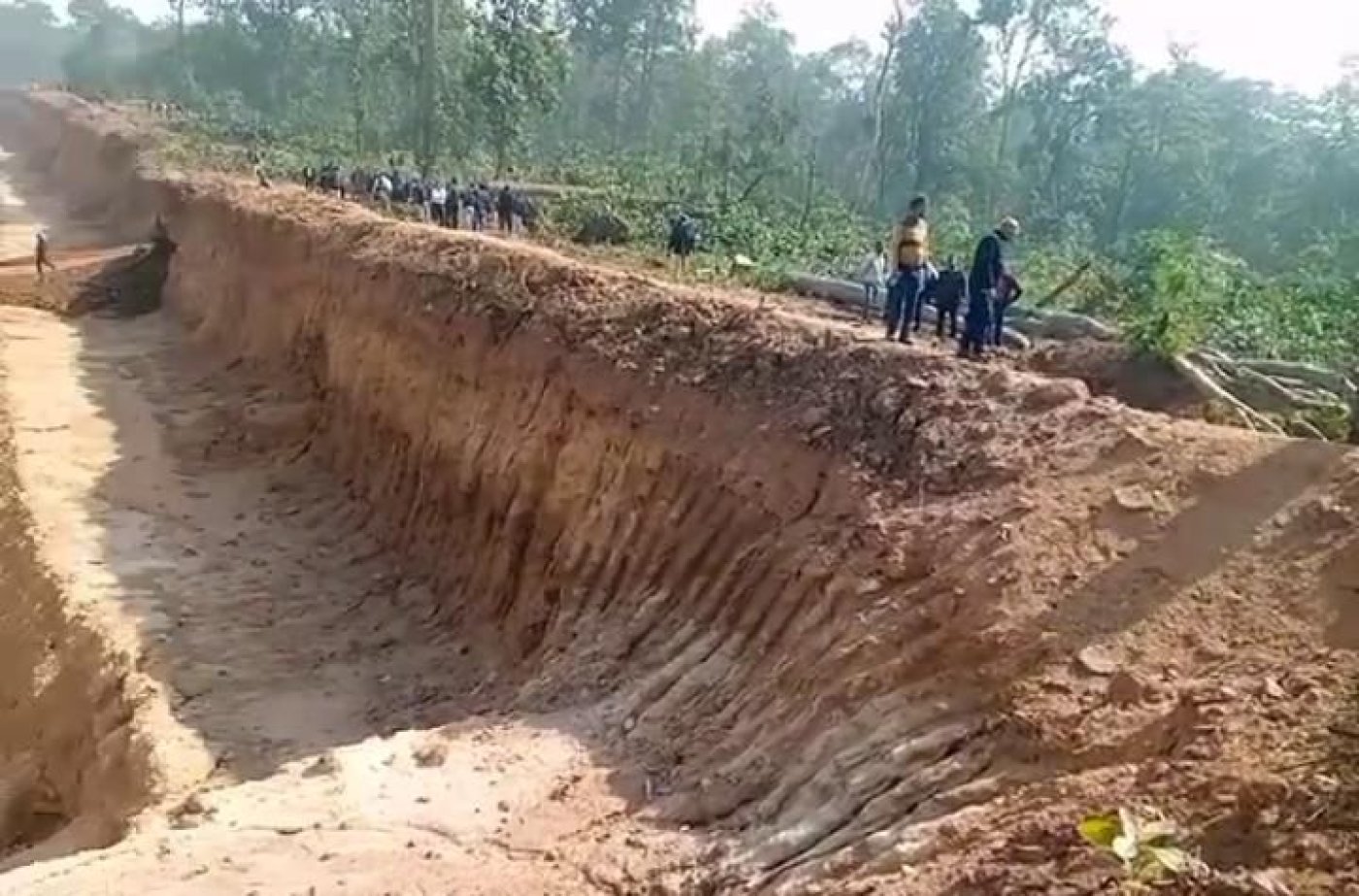Raipur: For three days starting 21 December 2023, several hundred policemen and district officials kept watch as more than 600 workers with chainsaws felled an estimated 15,000 trees in northern Chhattisgarh in India’s forested heart, home mainly to Adivasis.
The trees stood on 91 hectares (about 58 football fields) of land in the Hasdeo Arand forest, one of India’s largest contiguous forest tracts, spread across more than 1,800 sq km, about three times the size of Mumbai, home to “rare, endangered and threatened fauna”, according to a government research institute.
The forest clearance marked the clearing of decks for continuing of mining operations at the Parsa East & Kanta Basan (PEKB) coal block. The block was allotted by the union government in 2012 to the Rajasthan Rajya Vidyut Utpadan Nigam Limited (RRVUNL), a state power generation utility, which was waiting through 2023 for additional forest land to mine coal it needs for the desert state’s thermal power plants.
Since the first phase of mining operations began in 2013, the Adani Group has excavated coal from PEKB mine as RRVUNL’s “mine developer and operator” (MDO).
Besides being a source of livelihood from timber, fruit and medicinal herbs and leaves, the more than 30 species of trees ravaged, including teak, neem, mahua, jamun and others, were also worshipped by local indigenous communities as deities.
Not long after the forest clearance work was completed, a herd of wild elephants—the PEKB block falls within an important elephant corridor that has recorded growing human-elephant conflict—charged through a hamlet near Surguja district’s Udaipur town, local residents told Article 14.
Located 12 km from the site of tree-felling, the hamlet saw 10 homes destroyed, and the death of a tribal man.
Onn 7 February, 30 legislators of the Congress party, the main opposition party in Chhattisgarh, were suspended for entering the well of the state assembly to demand a discussion on the floor of the house on the razing of 15,000 trees. Their suspensions were later revoked, but their contention that the assembly had in 2022 adopted a resolution requesting the union government to cancel all coal blocks in Hasdeo did not yield a discussion.
The cutting of trees, in phases, to mine coal in the PEKB block has led to extensive deforestation in Hasdeo Arand, home to an estimated 5 billion tonnes of coal.
Environmental activist Alok Shukla of the Chhattisgarh Bachao Aandolan, a local NGO, estimated that nearly 150,000 trees were cut in over a decade ending 2022 to clear 762 hectares of forest in stage 1 of RRVUNL’s mining in the PEKB block. Spread across 1,898 hectares of dense forest, the PEKB block was to be mined in two phases—762 hectares in stage 1, and 1,136 hectares in stage 2.
While the RRVUNL in September 2020 sought for the area covered by stage 1 to be increased from 762 hectares to 1031.845 hectares, activists and political leaders have referred to the fresh tree cutting as an early onset of stage-2 operations.
Chhattisgarh’s forest department told the National Green Tribunal (NGT) in January 2024, in response to news reports of the cutting of trees in December, that 81,866 trees were cut over a decade since mining operations began in 2012-13 (50,014 trees in 2012-13 to 2017-18, and 41,852 trees in 2018-19 to 2022-23). Activists have said this is an undercount.
The destruction of hundreds of hectares of pristine forest has continued despite a 2021 study by the Wildlife Institute Of India (WII)—an research institute under the union environment ministry—for the government of India’s Indian Council For Forestry Research And Education (ICFRE) recommending that mining operations be permitted only in portions of the PEKB block already open for mining, while other areas in the Hasdeo Arand coalfield (HACF) and surrounding lands be declared ‘no-go areas’ for mining.
The report listed what would be lost if the forests were cut: “irreplaceable, rich biodiversity”, up to 70% of the income of local Adivasis who depended on forest resources, including food, fodder, fuel to medicinal plants, and socio-cultural values of the region.
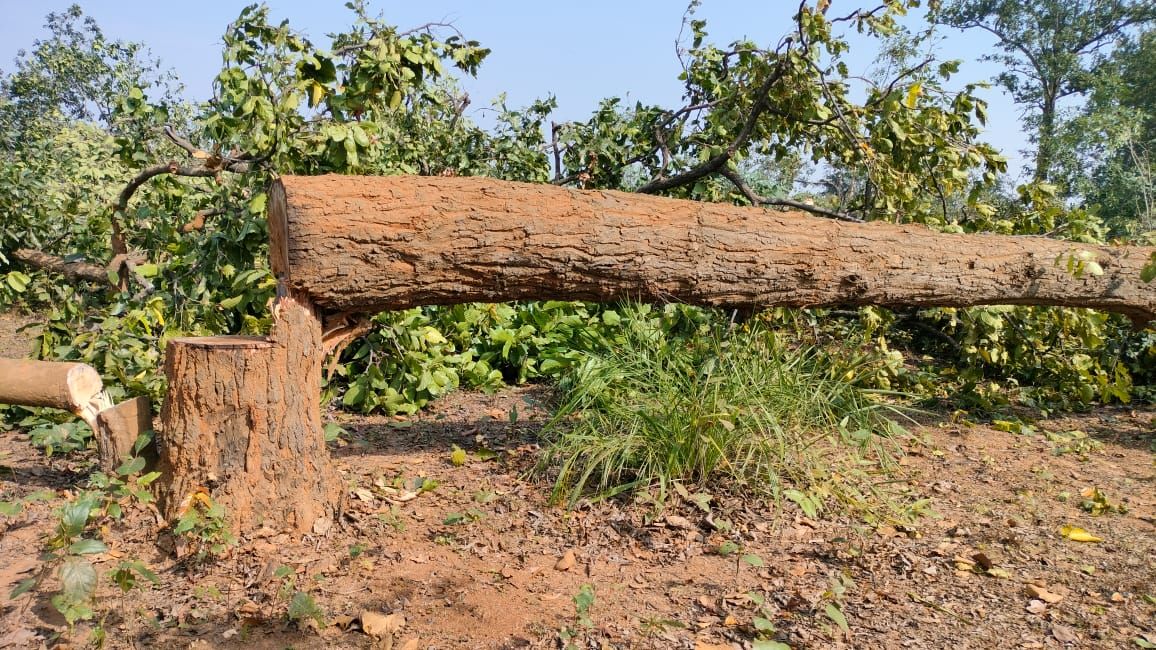
“The HACF and the landscape surrounding it support rich biodiversity with a multitude of mammalian species including elephants and also harbours forest-dependent communities,” said the WII report. “Therefore, sustaining the forest cover and maintaining its overall ecological integrity is essential.”
Ramlal Kariyam, a resident of Salhi village in Udaipur block, said the Bharatiya Janata Party (BJP) and the Congress had both “played the tribals like a football”.
On the ecological damage to the delicate Hasdeo Arand, the BJP has squarely laid the blame on the Congress-led United Progressive Alliance-2 (UPA-2) which allotted the coal blocks in the forest even though they had been designated a ‘no-go’ area.
State BJP spokesperson Gaurishankar Srivas told Article 14 that stage-2 of the mining in PEKB block was to have started only in 2028. “It began instead in the end of 2023,” he said. “You should ask the Baghel government (previous Congress chief minister Bhupesh Baghel) where all the coal extracted during phase-1 went.” Srivas said there was collusion between Baghel and the then Congress government of Rajasthan.
Srivas said the BJP government of Chhattisgarh would now undertake afforestation measures.
State Congress leader T S Singhdeo agreed that phase-2 of mining in PEKB block was to have begun in 2028, but said early extraction by companies could be because of Indian commitments on decarbonising the economy made at multiple Conference Of Parties (COP) meetings.
Displaced By Mining
Besides the loss of tens of thousands of trees, hundreds of tribal families have been displaced by the mining, while thousands more are at risk of being displaced.
The PEKB project covers a total area of 2,700 hectares, including 1,898 hectares of forest land and 402 hectares of land acquired from local villagers. Following the loss of their lands to the PEKB mining project, approximately 170 families residing in the Kete village of Udaipur block were displaced.
Tribal Shivprasad Kusro, a former resident of Kete village, now resides in Basan village, 3 km away. Before the displacement, four generations of his family had lived in Kete village, and the Kusros had traditionally undertaken paddy farming on 13 acres of leased land.
Once the takeover of their lands for the PEKB mining project was given the nod, Kusro’s family received Rs 33 lakh as monetary compensation, a sum that seemed very large for a poor family that had only earned a few thousand rupees a month. “The money was divided among three brothers,” said Kusro. "We had never seen such money before, so my share of Rs 11 lakh seemed high.”
It was years before he found out that the market value of their land was actually higher. Others faced the same situation, according to Kusro. Villagers who accepted the compensation settled in different nearby villages.
Kusro, 35, moved from Kete in 2014 and settled with his family in Sarma village, located 80 km away in Korba district.
Then he heard the news that the Adani group had opened a school, the Adani Vidya Mandir, in Salhi village, near Basan and Kete. The institution was offering free schooling, he was told, and he immediately decided to relocate to Basan.
Kusro enrolled his two children in the school, thrilled that they would get a CBSE board education, a big win even if the family had no land.
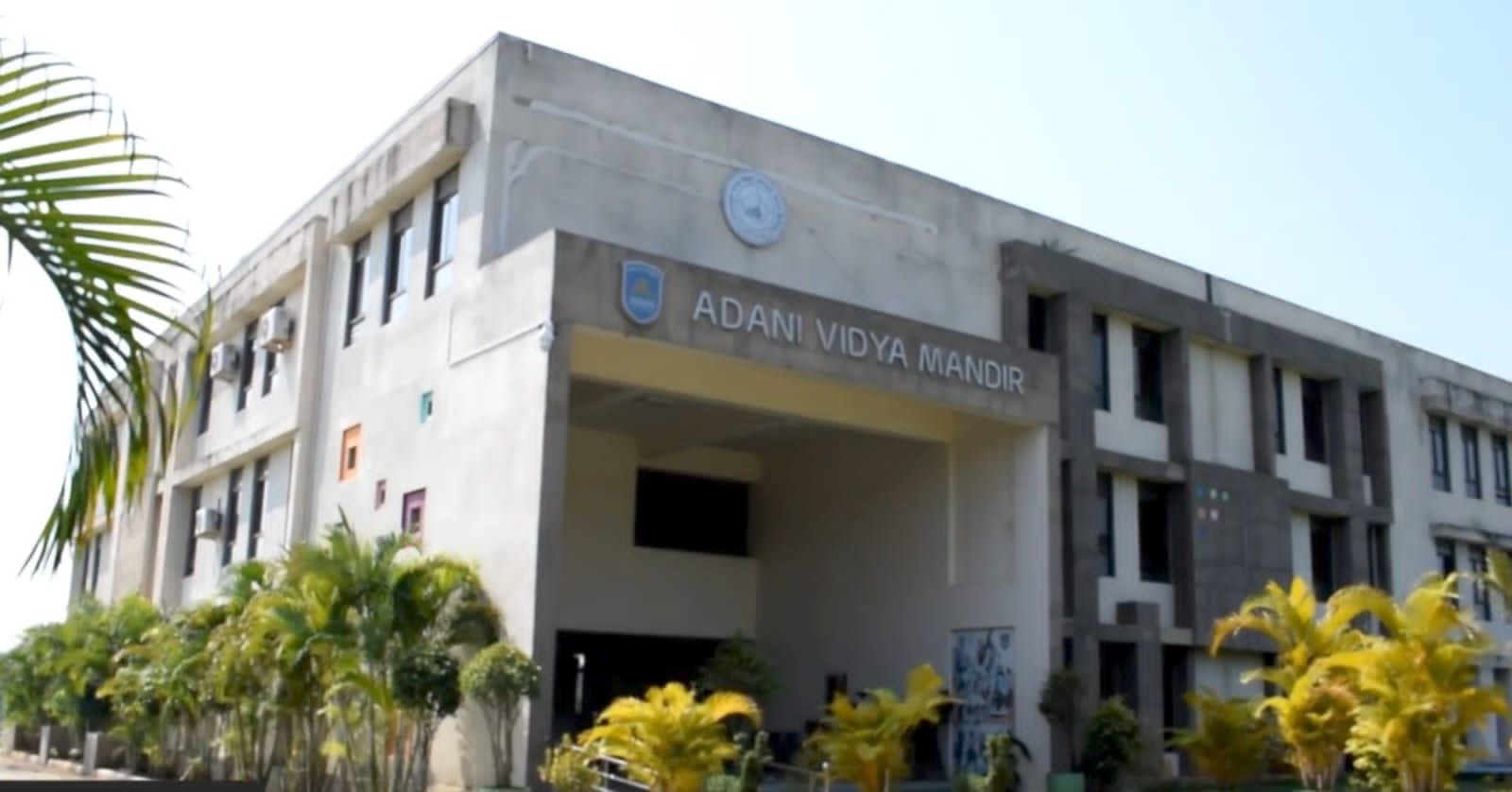
A father of six children, when Kusro went to enrol his third child in the school, he was told that the free education was limited to two children per couple, and he would have to pay the school fees for his third child. “I decided to withdraw both my children from that school,” he said. “I enrolled them in a government school.”
Similarly, many other villagers also withdrew their children from the private company-run school, he continued.
Having moved to Basan, Kusro bought land in the village, which had more than 200 houses, and built a kuccha house, an informal structure of mud with a clay-tiled roof. From the house, he also runs a small shop that is his sole source of income.
Shripal Porte, the sarpanch (elected village chief) of Basan village, said they believe theirs will be the next village to be displaced after Kete. He said villagers in Basan have seen the result of the displacement of Kete’s residents. “Only 15% of those displaced could support themselves,” he said, “and the rest are still homeless.”
The villagers in Basan are wary, he said, adding that they have resolved to neither give up their lands nor move.
According to Shripal Porte, for the rehabilitation of the 60 families of Kete, about as many homes were built, “together smaller than the prime minister’s residence”.
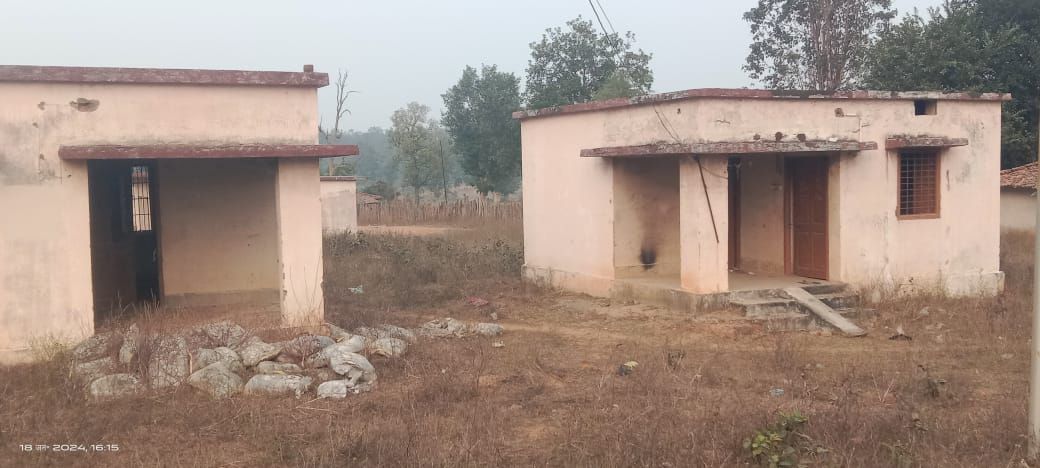
Plantation Won’t Replace Forest, Say Locals
Porte said that besides forest produce, the other big source of income for villagers in Kete had been domestic animals, which they kept tethered in their homes. Nobody barring a very small number of families could live comfortably in their homes, according to Porte.
At the start of mining operations in phase 1, a large number of Kete’s former residents had worked as labourers in the mines, at a monthly income of Rs 6,000. “Due to health problems, however, people gradually quit working there.”
Porte said the Adani group also established a hospital at Gumga, 10 km north of Basan. “All patients are referred from there to the district hospital,” said Porte.
According to Porte, household incomes in Kete, Basan, Salhi and other villages nearby was about Rs 250,000 per year, mainly from forest products like tendu leaves, chironji, sal (teak) seeds, sal leaves, mahua flowers, charota seeds, etc. Gathering of forest produce is usually undertaken for six months of the year, while the rest of the year is spent tilling their farms.
“Now, when forests are being cut, the economic condition of the tribals of the Hasdeo area will worsen,” said Salhi village’s sarpanch, Vijay Korram, “due to the loss of income from collecting and selling forest produce.”
RRVUNL told the MoEFCC in 2020 that until the end of July 2020, more than 609,000 trees had been planted, and another 8,145 trees transplanted.
“We have not counted them to see how accurate their data is,” said Umeshwar Singh Armo, a villager, conceding that the saplings planted by the company were indeed visible. He said the afforestation work was a mere formality, and survival rates of the saplings would have to be assessed.
“Remember one thing, a natural forest is more powerful than a forest grown through plantation,” Armo said. “Don’t imagine that we can get back the forest that was destroyed.”
964 Million Tonnes Of Coal In Hasdeo For Adani Group
The Hasdeo forests spanning north Chhattisgarh’s Korba, Sarguja and Surajpur districts are home to forest and agriculture-dependent communities such as the Gond Adivasis. The Hasdeo landscape has been unchanged over eons, experts said, because of the environmental stewardship of its indigenous communities. This rich ecosystem is coveted by mining corporations for the vast coal reserves it holds: the HACF, as mapped by the ministry of coal, has over five billion metric tonnes of proven coal reserves, across 1,878 sq km, 1,502 sq km of which comprise forests.
The Hasdeo Arand forest contains a total of 22 identified coal blocks. Prior to 2008, these coal blocks were turned over to private and government companies without any auctions.
So far, three blocks have been allotted to RRVUNL, which has in turn awarded MDO contracts for all three to one of India’s most powerful corporations, Adani Enterprises Limited (AEL), headed by Gautam Adani, Asia’s second wealthiest tycoon.
AEL now holds contracts to mine an estimated 964 million tonnes of coal in Hasdeo. To get to it, nearly 7,500 hectares of land and forests (an area equivalent to 1/8th the size of Mumbai) that local communities currently depend on will be taken over and stripped for open-cast mining. This includes the largest operational mine in Hasdeo, the PEKB coal block, given a forest clearance in 2011.
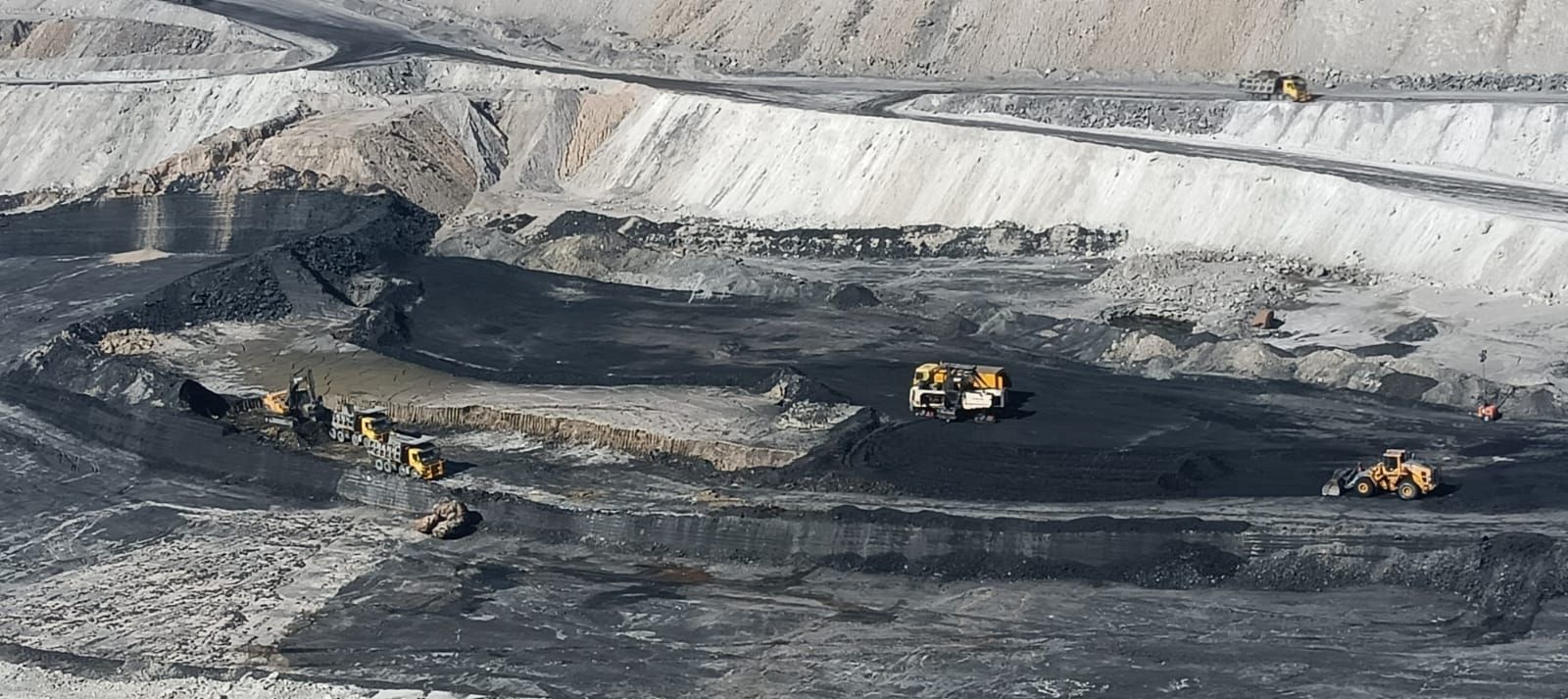
Over the years, since AEL began mining operations in Hasdeo, communities across the region have witnessed the impacts of deforestation and have mobilised against new mining projects. The decade-long opposition to mining in the Hasdeo Arand forests has been at the forefront of environmental justice movements in India, with village communities using legal rights, such as the Scheduled Tribes and Other Forest Dwellers (Recognition of Forest Rights) Act, 2006 (also simply called the Forest Rights Act or FRA), moving courts, undertaking padyatras (foot marches) and organising months-long sit-ins.
‘No-Go’ Forest Area Becomes Coal Mining Hub
In 2010, an official government study designated the entire 1,898 square km area of Hasdeo Arand a 'no-go area'.
In 2009, the ministry of coal and the ministry of environment & forests (MoEF, renamed after 2014 as the ministry of environment, forests and climate change) conducted a joint study in nine coal fields across the country—Talcher (Odisha), IB Valley (Odisha and Chhattisgarh), Mandiraigarh (Chhattisgarh), Sohagpur (Chhattisgarh and Madhya Pradesh), Wardha (Maharashtra), Singrauli (Madhya Pradesh and Uttar Pradesh), North Karanpura (Jharkhand), West Bokaro (Jharkhand) and Hasdeo (Chhattisgarh).
It classified the coal blocks in these coalfields into two categories—unfragmented forest landscapes with a gross forest cover (GFC) of over 30% or ‘no-go’ areas, and fragmented forest landscapes with lower GFC that were ‘go’ areas.
At the time, there were 20 identified coal blocks in Hasdeo, and it was the only assessed coalfield where all coal blocks were deemed ‘no-go’ areas.
The MoEF said the classification, which had only “indicative” value and was undertaken on the initiative of the coal ministry, sought to prioritise areas where forests may be considered for diversion for coal mining, by “causing least possible damage to the forests and wildlife”.
The WII study in 2021 called the 2009 study’s outcome an important policy decision towards “objective, transparent and informed” decisions in cases of forest land diversion for coal mining projects and said the study’s findings held “substantial importance for ecologically balanced sustainable growth”.
The 2009 study was set aside in 2011-12.
Environmental activist Alok Shukla said it was former chief ministers of Chhattisgarh and Rajasthan, Raman Singh of the BJP and Ashok Gehlot of the Congress respectively, who exerted pressure on the MoEF to approve mining operations in the PEKB block.
In March 2012, in a surprise move, with Jairam Ramesh as minister, the MoEF issued forest department clearances for mining by RRVUNL in PEKB block.
The efforts of both chief ministers were critical to obtaining this clearance, Shukla told Article 14.
Wild Animal-Human Conflict Due To Deforestation
More than 80% of the HACF and its surrounding landscapes comprise forest lands.
The 2021 study by the WII, using camera traps and sign surveys, identified nine schedule-I species, which have the highest level of legal protection under the Wildlife (Protection) Act, 1972. Among the more than 25 mammalian species were threatened large carnivores including the leopard, Indian grey wolf, striped hyena, sloth bear and others. One forest division in Korba reported occurrence of tigers while elephants were found in 148 out of 647 compartments in the HACF and surrounding forests in 2018-2020.
Ramlal Kariyam of Salhi village told Article 14 that there had never been any conflict between humans and elephants in the Hasdeo area before mining activities began. Wild elephants would pass by the villages in herds, but never caused harm to villagers.
In 2013, however, during the first phase of mining in the PEKB block, as trees were cut down and a lake that was an important water source was destroyed, elephants began to roam farther in search of water.
Referring to information provided by the forest department in response to a query under the RTI Act, Kariyam said that from 2015 to 2018, a total of 752 people received compensation after attacks by wild animals in the Hasdeo area, of which 513 cases were related to damage to crops and homes caused by animals such as elephants, while 239 cases pertained to attacks on villagers by wild animals including elephants, leopards, bears, etc.
Local forest ranger of the Udaipur block range, Lalchand Lakra, refused to comment, but the WII study corroborated much of the villagers’ experiences.
It said human–elephant conflict in the form of crop losses and occasional property damage was widespread, and that enriching the habitat condition for elephants was important for their conservation.
Chhattisgarh’s human-elephant conflict is a paradox, the study said. The state has fewer than 300 elephants, less than 1% of India’s wild elephant population, but records up to 60 human lives lost each year due to conflict with elephants, a disproportionate number of human fatalities given the area’s elephant population, the report said.
The forests that elephants are seen in are highly fragmented and degraded due to incompatible land-use, it said. “Infrastructure development and mining are further fragmenting the habitats making conflict mitigation a huge challenge.”
One reason for high human-elephant conflict is elephant dispersal from forest habitats through fragmented human use areas, according to the WII study. “This large scale elephant dispersal out of intact forests coincides with commencement of large-scale mining projects…” the report said, about the elephant corridor region, particularly Odisha and Jharkhand.
Mining Transitions Into Phase Two
According to RRVUNL’s mining plan, coal production was to have been 137 MT over 15 years. By the end of July 2020, the mine had produced 61.10 MT of coal, with 20.91 MT of mineable reserves still available then, aggregating to a mineable 82.01 MT in the stage-1 boundary.
In 2018, the production capacity of the PEKB mine was increased by the ministry of coal from 10 MTPA to 15 MTPA, indicating that reserves within stage-1 would be exhausted earlier than originally set out. RRVUNL told the MoEFCC in 2020 that the exhaustion of reserves within the area delineated for stage-1 had advanced to 2021-22 because the previous calculation of reserves (137 MT in stage-1) had been an error.
Actual mineable reserves in the forest land allotted under stage-1 were only 82.01 MT, the company said, about the early exhaustion of stage-1 reserves.
RRVUNL sought more land to be allotted under stage-1 so that mining may continue.
In February 2022, RRVUNL received permission from the MoEFCC to proceed with phase-2 of mining operations, involving more deforestation. In March 2022, the state government cleared the same project. As a result, 137 hectares of the remaining 1,136 hectares of the PEKB block were opened up for deforestation.
In 2022, during the Congress government's tenure in the state, tree-cutting was undertaken on 46 hectares of forest area. According to Alok Shukla, 8,000 trees were cut, an official estimate.
It was the remaining 91-hectare area that witnessed tree-felling in December 2023, with more than 15,000 trees razed.
Shukla claimed the reported data was incorrect. Based on the WII’s estimated 400 trees per hectare in the HACF, he said, there would be 36,400 trees on 91 hectares of land.
“Trees with a width of less than one foot are not officially counted,” said Shukla. He said if all types of trees were counted, the number of trees lost to deforestation would be much higher.
There is a remaining 999 hectares of forest land that will eventually face the same fate for continuing mining operations at the PEKB block. Shukla said that based on the WII’s estimations of forest density, more than 399,000 trees would be cut down in the future.
Neither the local ranger Lakra nor sub-divisional magistrate B R Khandey agreed to comment on the cutting of trees.
Three Villages Fear Impact Of Mining In Parsa Coal Block
Mining is currently underway in two blocks in the region, PEKB and Parsa coal block. AEL is the mine developer and operator for both.
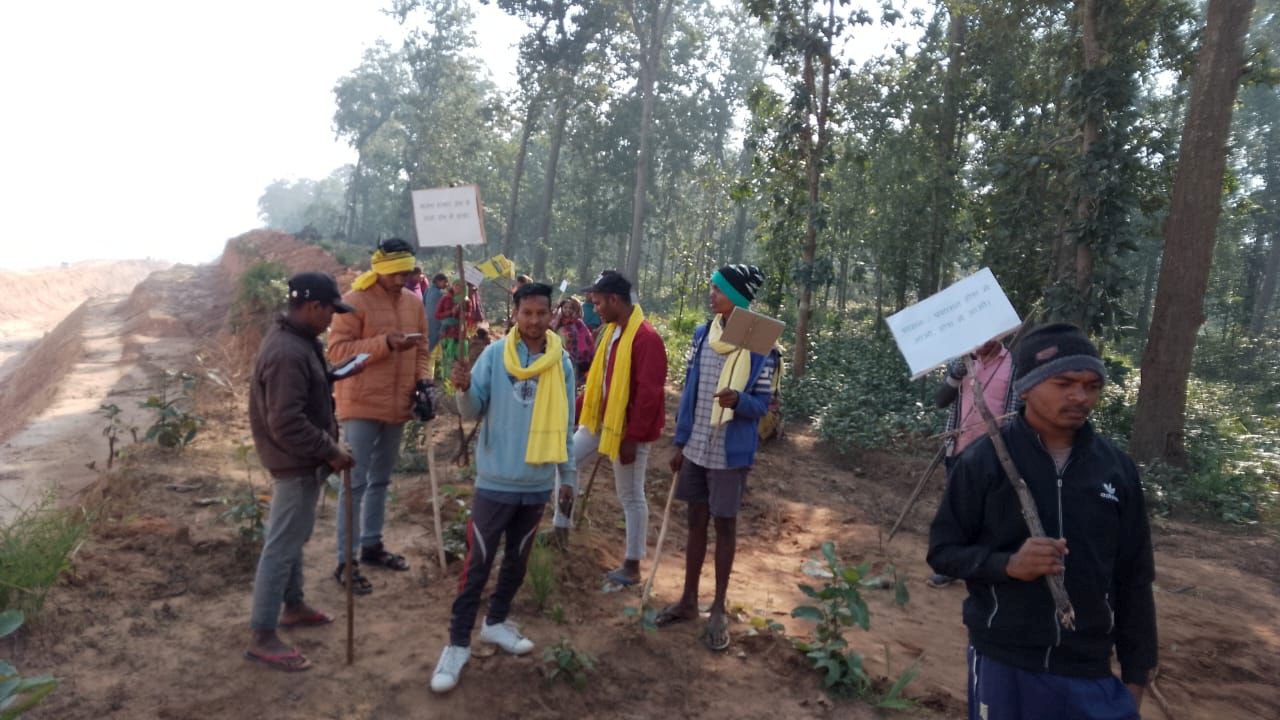
The Parsa coal block was allotted to RRVUNL in 2015, with a fixed area of 1,257 hectares for mining, including 841 hectares of forest land.
The union government provided a final approval for forest clearance for stage II of operations in 2021, and the state government of Chhattisgarh approved it in April 2022. According to Shukla, 1,500 trees were cut down in 2022 to clear forest land for mining in the Parsa coal block. However, the process was halted after more than 2,000 villagers from across Udaypur block protested.
Muneshwar Singh, a resident of Fatehpur, a smaller village in the Ghatbarra panchayat, said that in early 2018, all the villagers were called by the Surguja district administration for a gram sabha (general body meeting of the electorate), in the presence of several officials, allegedly to finalise 'individual forest rights' that the villagers had demanded under the FRA.
Hopeful that they would get official lease documents to forest land they had been cultivating for years, most attended.
Though leases were distributed that day, according to Singh, villagers found out later that the gram sabha was also used to fraudulently acquire land.
According to Singh, when sarpanch (elected head) of Ghatbarra Jainandan Porte filed an application under the Right To Information Act, 2005, it came to light that panchayat secretary Gopal Das and the sarpanch, who is also chairman of the village’s forest rights committee as per the FRA, had been taken to the state guest house in Udaipur where they signed documents stating the gram sabha’s acceptance of the environmental approvals granted for mining operations in Parsa coal block.
Singh said in fact there had been no discussion regarding the diversion of forest land for coal mining during the gram sabha.
Under the Panchayat (Extension to Scheduled Areas) Act (PESA), 1996, in areas listed in the 5th schedule of the Constitution that have large indigenous populations, the consent of the gram sabha is mandatory for diversion of forest lands.
Jainandan Porte said the PEKB project and the Parsa coal block project had both been cleared by fabricating the consent of the gram sabha of the villages in the vicinity, such as Fatehpur and Salhi.
Kariyam of Salhi village said that the land on which Salhi and Hariharpur were located was also cleared for non-forest use fraudulently for the Parsa coal block. He said a gram sabha had been held in Hariharpur and Salhi villages on 24 and 27 January 2018 respectively, and the district administration had held that the sarpanch of Salhi had signed her consent for forest clearances for the mining operations in the Parsa coal block.
“When we came to know about this, the female sarpanch of the village gave a written statement that she had not given any consent for the Parsa coal block” Kariyam said. “Her signature on the consent letter was fake.”
Korram, the current sarpanch of Salhi, agreed with Kariyam. He said the current time is a test for Salhi’s people. The displacement of the population of Hariharpur village, around 380 inhabitants, is likely, said Korram. “While Salhi village, with a population of 1,409, will not be displaced, it will definitely be affected,” he said.
According to Korram, the biggest problem would be the groundwater level in the area. When mining started, water was available at a depth of 15 feet, he said, but villagers must now dig up to 100 feet to strike water. “This is just at the beginning of the mining activity,” he said..
Kariyam said more than 100 types of herbs are found in the Hasdeo forest, and recent tree felling had destroyed many of these shrubs.
"Like me, every person in the village knows about treating various diseases with special herbs,” he claimed. “But the way forests are being destroyed for mining, hundreds of rare herbs will disappear.”
Article 14 contacted local Udaipur sub-divisional magistrate B R Khandey seeking comment on various questions raised by villagers about mining operations in the Parsa and PEKB coal blocks. He declined to comment, and directed that questions be sent instead to an officer of the RRVUNL.
State leaders of the Congress and BJP blamed one another for the deforestation and for the villagers’ allegations of improper relocation and fraudulent gram Sabha consent.
BJP spokesperson Srivas said the new BJP government in the state would now ensure that the PESA Act is implemented. “Our government has decided that all those tribals who were dependent on forest produce for income will be linked to small cottage industries,” he said.
Congress leader Singhdeo said he had resigned from the post of minister for panchayati raj in 2022 over the implementation of the PESA law. “I wanted to consult tribal residents on issues such as mining,” he told Article 14. He said he resigned when this was not done.
(Mohammad Sartaj Alam is an independent journalist based in Lucknow.)
Get exclusive access to new databases, expert analyses, weekly newsletters, book excerpts and new ideas on democracy, law and society in India. Subscribe to Article 14.

